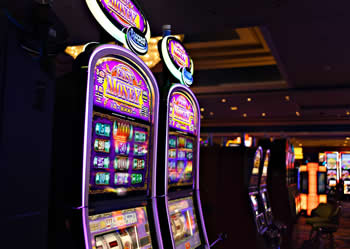The saga of gaming machines is a fascinating journey that reflects the progress of amusement and betting throughout the ages. From their simple start in the late 19th century to becoming a mainstay in gaming halls across the globe, these games of chance have undergone notable evolutions. Slot machine games have enthralled players with their vibrant visuals, engaging concepts, and the promise of wealthy prizes.
Initially designed as analog instruments with rotating reels and a small number of images, slot machines have evolved into cutting-edge electronic games that incorporate innovative features and interactive features. In the present day, they draw in millions of players, each wanting to hit the jackpot with just the yank of a lever or the tap of a button. Delving into the captivating past of these devices reveals not just the story of a well-liked activity, but also a depiction of societal changes and technological advancements over the ages.
The Beginnings of Slot Machines’ History
The story of slot machines starts in the final years of the 19th century, a time when machines were becoming popular in entertainment venues. A groundbreaking slot machine was invented by Charles Fey in 1895, known as the Liberty Bell. It featured 3 spinning reels and five symbols: hearts, diamonds, spades, a horseshoe, and the famous Liberty Bell. Players pulled a lever to spin the reels, and if the symbols aligned in a specific combination, players won a payout. Fey’s invention rapidly captured the attention of gamblers and set the foundation for future developments in casino slots games.
As the idea of the slot machine gained traction, numerous inventors sought to improve upon Fey’s design. By the early 1900s, slot machines were becoming a frequent presence in saloons and amusement parks. In 1907, the first electromechanical slot machine was created by Herbert Mills, featuring a more intricate system of payout mechanisms and the renowned fruit symbols that are still linked to slots today. This evolution marked a significant shift in the gaming industry, as machines became more entertaining and user-friendly, attracting more players. big88
The popularity of slot machines continued to soar throughout the first half of the 20th century, resulting in their extensive use in casinos across the United States. However, as legal restrictions on gambling during the Great Depression presented challenges for the industry. Many machines were banned, but this did not halt innovators. Instead, they adjusted by creating machines that gave out candy or gum instead of cash prizes, effectively bypassing the restrictions while still offering the thrill of a casino slots game. This ingenuity kept the spirit of gambling alive, setting the stage for the future resurgence of slot machines in modern casinos.
Development of Casino Slot Technology
The story of slot machines commenced in the late 19th century with the invention of the early mechanical slot machines. A mechanic named Charles Fey, a West Coast engineer, introduced the first slot machine in 1895, which boasted three revolving reels and five symbols: hearts, diamonds, spade symbols, a horseshoe, and the Liberty Bell itself. This basic yet enthralling appearance laid the groundwork for the future of casino slots game, creating an immediate attraction for players searching for entertainment and a opportunity to win.
As tech progressed, so did the appearance and functionality of gambling devices. By the central 20th era, electromechanical machines appeared, incorporating electrical components to improve gameplay and increase payout chances. These developments allowed for increased sophistication features like various paylines and larger jackpots. The gaming establishments adopted these innovations, resulting in the growth of casino slots as a major source of revenue within the gaming industry, fundamentally changing the slots gaming experience.
The late 20th and initial 21st centuries heralded the age of digital technology, resulting in the debut of video gambling machines. These devices changed out traditional reels with screens, enabling even more imagination in themes and gameplay mechanics. Players could now enjoy rich graphics and sound effects, along with involving bonus rounds. The transition to web-based gaming further revolutionized the gambling world, allowing slots accessible to a global population whenever and everywhere, thus marking a new era in the development of gambling device technology.
A Cultural Influence of Slot Machines
These gaming machines have become not only a means of leisure; they have integrated into the essence of popular culture. From movies and television shows to music and literature, these famous gaming machines often act as symbols of luck and risk. Films like The Casino and Ocean’s Eleven prominently feature slots, portraying them as thrilling yet unpredictable elements of the casino atmosphere. Their distinct attraction lies in the sound of coins clinking, the spinning reels, and the bright blinking lights, which in unison create an electric atmosphere that captures attention.
Moreover, slot machines have shaped social gatherings and events, making them a centerpiece in casinos and gaming venues. Numerous individuals do not just go to a casino to gamble; they attend for the full experience, which encompasses the social interactions and the lively ambiance surrounding these machines. Special tournaments and themed gaming nights centered around these games also showcase their popularity, fostering social connections and shared experiences among players. This social element has contributed to the machines’ enduring popularity.
The advancement of technology has also changed this cultural impact. Digital and online slots have broadened access to these games well beyond the walls of physical casinos. Players can now enjoy their favorite casino slot games from home or on the move, leading to the rise of online communities and discussion boards where enthusiasts exchange strategies and experiences. The ongoing innovation in game design and the inclusion of storytelling have kept the cultural importance of slot machines alive, attracting new generations of players while maintaining a tie to their cultural roots.

